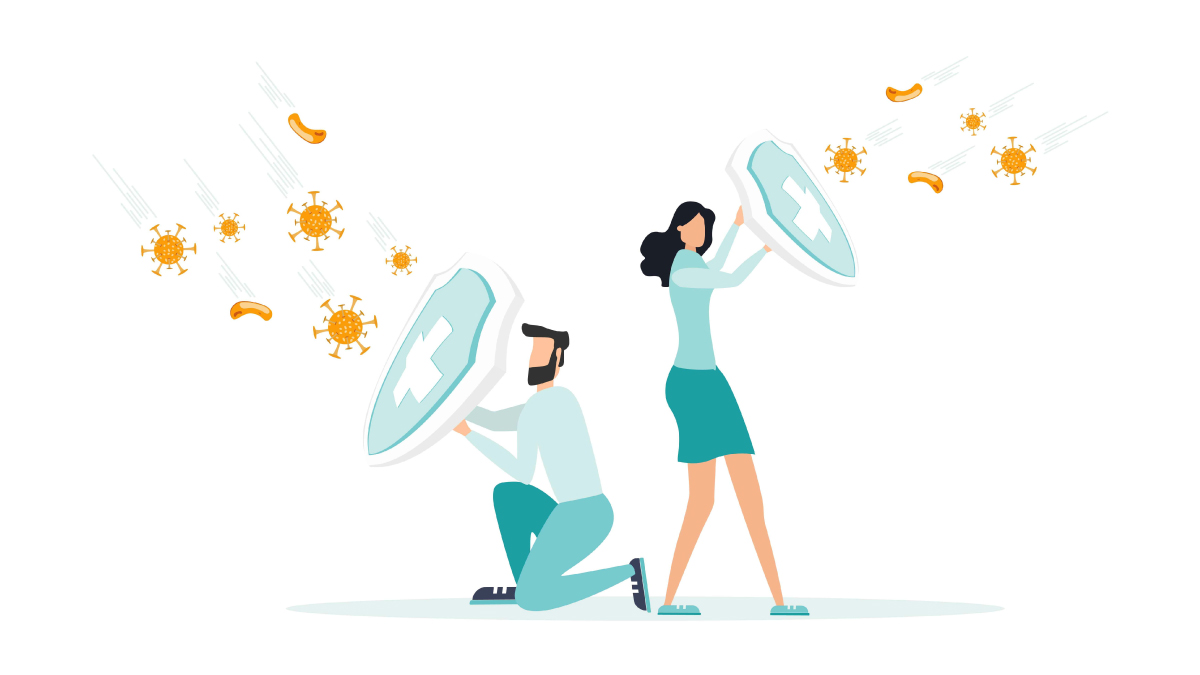
Prevent the spread of dust mites in our homes and workplaces
Dust mites are everywhere. They are with us morning and night, at home and at work, following us wherever we go. To limit our exposure, it helps to understand the conditions in which they develop. Dust mites prefer a warm, humid atmosphere, conditions which are often present in our living and working environments, particularly in autumn and winter.
How? Clearly, controlling the temperature and humidity level in our homes and workplaces is a key step in preventing dust mite allergy. As a benchmark, it is advisable to maintain an average indoor temperature of 18°C and a humidity level of 40-60%. For that, you need to restrict your use of central heating, and radiator or air humidifiers. It is also a good idea to ventilate your home and workplace environments on a daily basis as it helps prevent the conditions conducive to dust mite proliferation.
Get rid of dust mites at home and at work
It’s hard to know whether dust mites have chosen to live with us. These tiny creatures, invisible to the naked eye, have taken up residency without our knowledge by feeding on tiny bits of human detritus such as hair, nails and dead skin flakes. That’s why dust mites are often found in dust, under the furniture, in carpets, rugs, mattresses and cushions.
How? There’s nothing like a major spring clean to prevent dust mite allergy. These tiny bugs get everywhere, so it’s important to tackle every nook and cranny. Particular attention should be paid to removing dust from furniture, carpets, sofas, armchairs and mattresses. Washing sheets and pillowcases regularly is also recommended for eliminating dust mites.
Take natural anti-histamines to relieve allergy symptoms
Your nose is running, you’re constantly sneezing, your eyes are itching… the symptoms of dust mite allergy can appear at any time and be really unpleasant. There are a number of specific treatments that can help you prepare for and guard against allergic reactions. Among them, natural anti-histamines are a popular choice. These are natural substances that help reduce the effects of histamine, the molecule responsible for allergic rhinitis.
How? For dust mite allergy, you can use a powerful natural anti-histamine like quercetin. Available as a nutritional supplement, quercetin not only exerts an anti-histamine action for combatting allergy but is also a powerful antioxidant protector and anti-inflammatory. Suffice to say that this natural substance offers significant benefits for defending the body!
Take traditional, natural remedies for relieving allergies
Dust mites are responsible for many respiratory allergies – and have been for thousands of years. Several natural anti-allergy remedies are found in traditional systems of medicine, particularly in the Chinese pharmacopeia and Ayurvedic texts.
How? Natural anti-allergy treatments are now available that are inspired by Chinese and Ayurvedic remedies, such as Aller-7® recommended for relieving respiratory allergy symptoms. This product combines a number of plant extracts used in Ayurvedic medicine such as amla (Phyllanthus emblica) and haritaki (Terminalia chebula). Formulated to minimise allergic reactions, the supplement Aller Fight contains plants from the Chinese pharmacopeia including the famous ginseng (Panax Ginseng). With its multiple properties, this Asian plant is regarded as a remedy for all everyday ailments.
11
Great quality supplements
Great quality supplements! Orders arrive in a timely manner and customer service is all about the customer if there's any issues!! So glad I found this company and refer them all the time to others!
Buyer
15
Excellent supplements
Excellent supplements, clear website with important and useful information for each product (benefits, composition, studies made…) Fast and easy delivery. I have been a customer for year, and still trust Supersmart as the best.
BUISSON Laurence
1 Days
I see clearly now!
Full comprehensive formula.
DOMINIC
1 Days
Fast service good products
Fast service good products
PERCY
2 Days
Great Product ...........
Great Product ............ Fast Service. Thanks Supersmart.
SCOTT Mark
3 Days
Good price & waiting to find out how beneficial the product is.
At this time I can not comment on any medical value of my purchase. I have no medical issues I'm treating so I will have to wait until my next blood test some months away to see just what benefit this product has given me.
El Capt
3 Days
Quality Products
Fast shipping and quality supplements - some that are hard to find. Great selection on the website and usually have discounts.
WadeS
7 Days
Customer service is impeccable
Customer service is impeccable, shipping is almost immediate and best of all quality of products are second to non!
Mohamad Hussein
7 Days
Great fast service.
Great fast service.
Wai Kuen Lee
9 Days
Good service, fast delivery.
I received my order in just a few days. Great service, considering it was sent via USPS!
ABERT Ronald
9 Days
Great quality I noticed the vitamin B1…
Great quality I noticed the vitamin B1 and the Magnesium Complex helps my nerves and helps me go to the bathroom easier
MMA TUBE
11 Days
I'm so glad I found this site!
The ordering experience was a breeze. My choice in the products were mainly of their description which fit very close to what I was looking for. Since I have been using the supplements for a few months now, there is a big difference in the way I feel. I am much more focus. Thank you for providing good quality products that works!
Honyee
13 Days
Very effective high-quality
These are very effective high-quality products. I can feel the difference.
Julee
13 Days
Arrived on time
My product arrived on time and was packaged professionally.
LAURIE CALLAHAN
13 Days
The best
Outstanding products and service
jaygol



